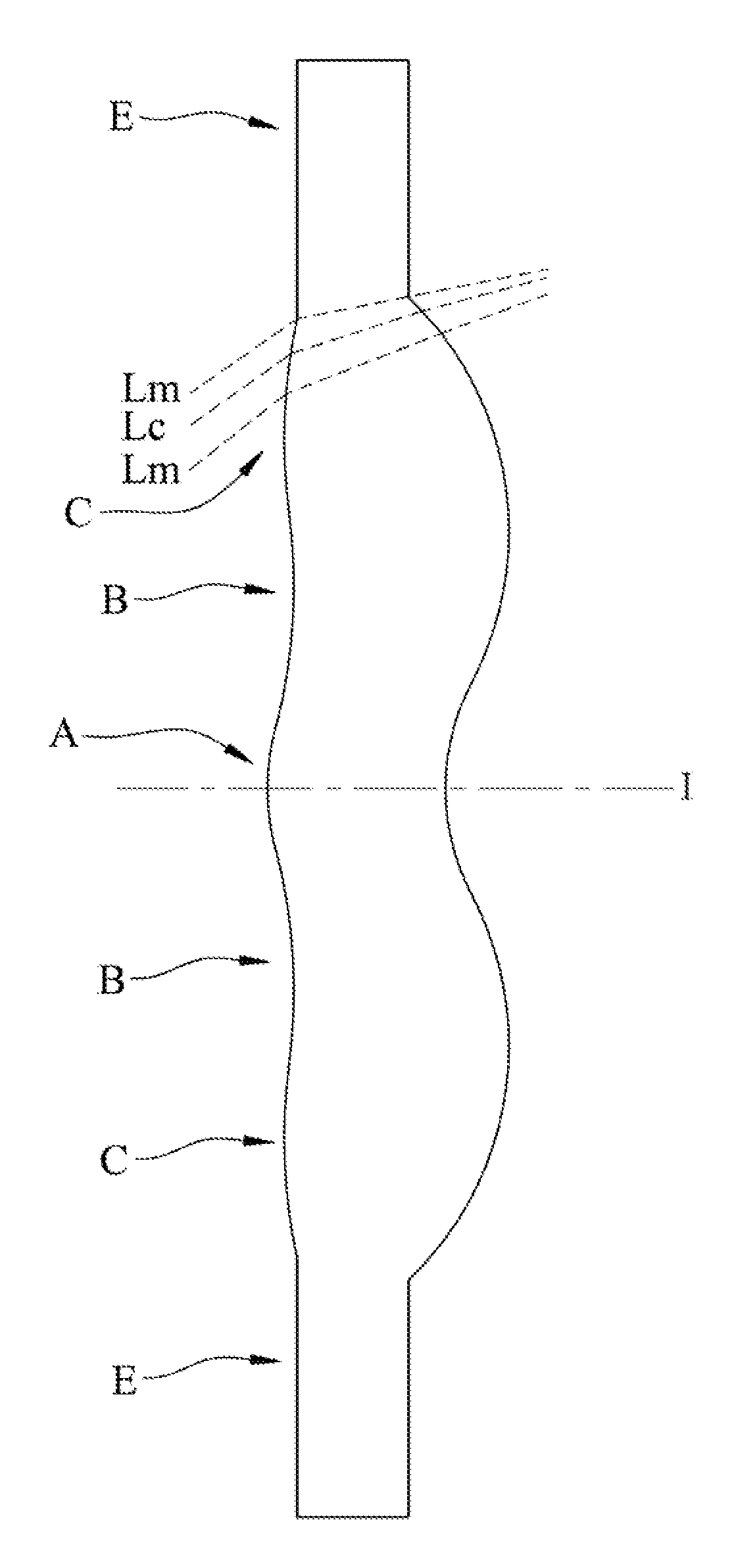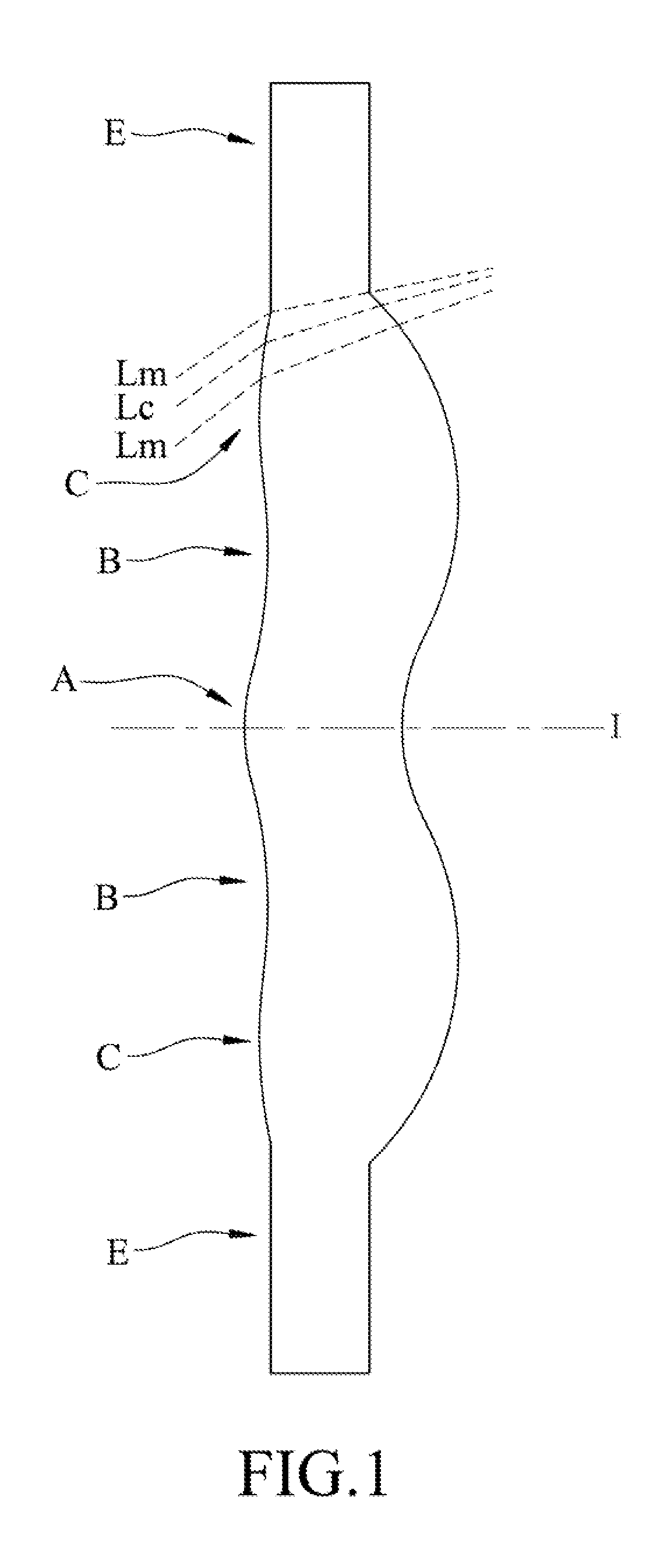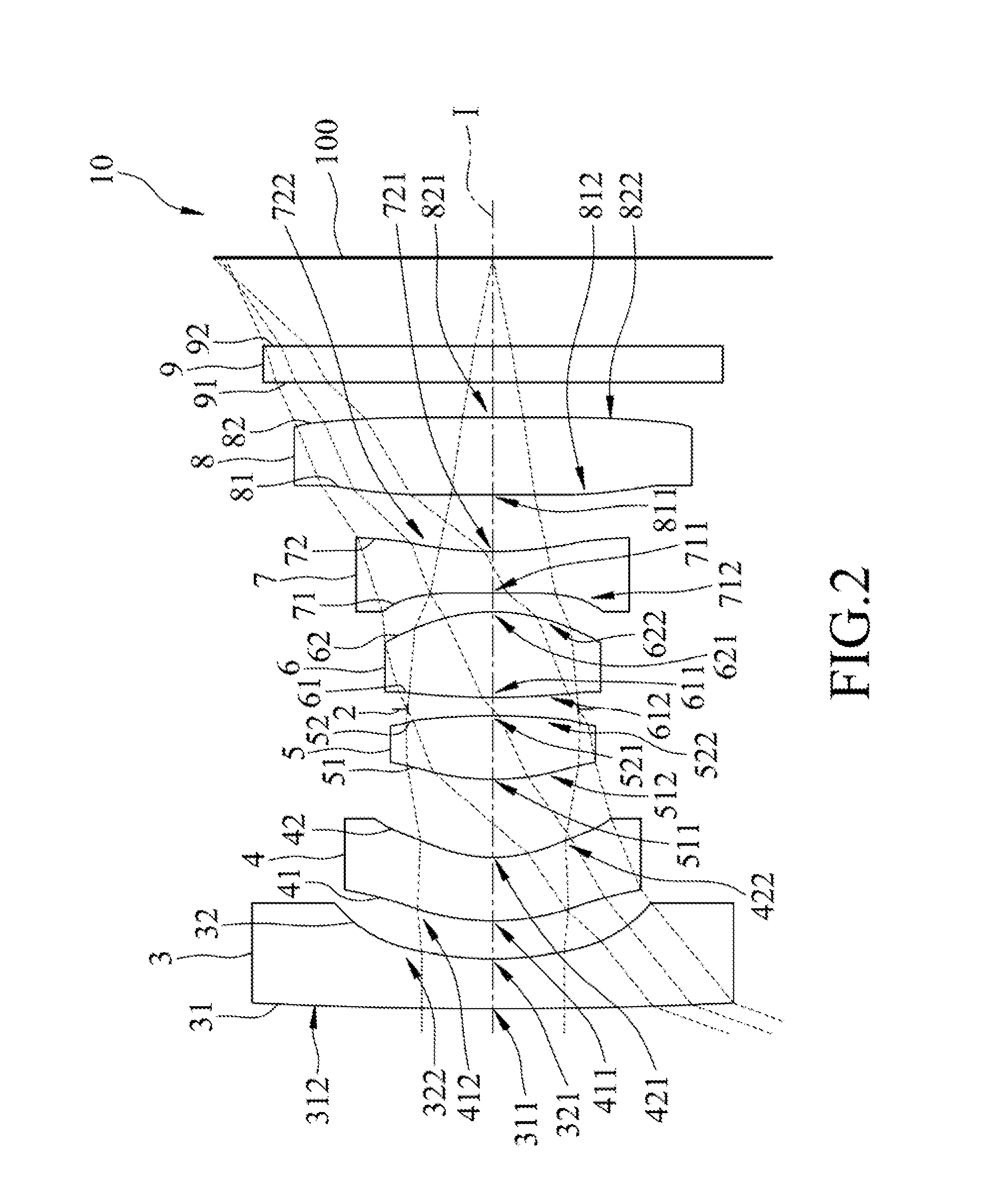Imaging lens, and electronic apparatus including the same
- Summary
- Abstract
- Description
- Claims
- Application Information
AI Technical Summary
Benefits of technology
Problems solved by technology
Method used
Image
Examples
first embodiment
[0042]Referring to FIG. 2, an imaging lens 10 according to the present invention includes a first lens element 3, a second lens element 4, a third lens element 5, an aperture stop 2, a fourth lens element 6, a fifth lens element 7, a sixth lens element 8 and an optical filter 9 arranged in the given order from an object side to an image side along an optical axis (I) of the imaging lens 10. The optical filter 9 is an infrared cut filter for selectively absorbing infrared light to thereby reduce imperfection of images formed at an image plane 100.
[0043]Each of the first, second, third, fourth, fifth and sixth lens elements 3-8 and the optical filter 9 has an object-side surface 31, 41, 51, 61, 71, 81, 91 facing toward the object side, and an image-side surface 32, 42, 52, 62, 72, 82, 92 facing toward the image side. Light entering the imaging lens 10 travels through the object-side and image-side surfaces 31, 32 of the first lens element 3, the object-side and image-side surfaces 41,...
second embodiment
[0089]Shown in FIG. 7 is a table that lists values of some optical data corresponding to the surfaces 31-91, 32-92 of the The imaging lens 10 has an overall system focal length of 1.760 mm, an HFOV of 70.000°, an F-number of 2.4, and a system length of 4.248 mm.
[0090]Shown in FIG. 8 is a table that lists values of some aspherical coefficients of the aforementioned relationship (1) corresponding to the second embodiment.
[0091]Relationships among some of the aforementioned lens parameters corresponding to the second embodiment are shown in FIG. 26.
[0092]FIGS. 9(a) to 9(d) respectively show simulation results corresponding to longitudinal spherical aberration, sagittal astigmatism aberration, tangential astigmatism aberration, and distortion aberration of the second embodiment. It can be understood from FIGS. 9(a) to 9(d) that the second embodiment is able to achieve a relatively good optical performance.
[0093]Via the aforementioned description, the advantages of the second embodiment...
third embodiment
[0095]Shown in FIG. 11 is a table that lists values of some optical data corresponding to the surfaces 31-91, 32-92 of the The imaging lens 10 has an overall system focal length of 2.090 mm, an HFOV of 70.000°, an F-number of 2.400, and a system length of 4.350 mm.
[0096]Shown in FIG. 12 is a table that lists values of some aspherical coefficients of the aforementioned relationship (1) corresponding to the third embodiment.
[0097]Relationships among some of the aforementioned lens parameters corresponding to the third embodiment are shown in FIG. 26.
[0098]FIGS. 13(a) to 13(d) respectively show simulation results corresponding to longitudinal spherical aberration, sagittal astigmatism aberration, tangential astigmatism aberration, and distortion aberration of the third embodiment. It can be understood from FIGS. 13(a) to 13(d) that the third embodiment is able to achieve a relatively good optical performance.
[0099]Via the aforementioned description, the advantage of the third embodime...
PUM
 Login to View More
Login to View More Abstract
Description
Claims
Application Information
 Login to View More
Login to View More - Generate Ideas
- Intellectual Property
- Life Sciences
- Materials
- Tech Scout
- Unparalleled Data Quality
- Higher Quality Content
- 60% Fewer Hallucinations
Browse by: Latest US Patents, China's latest patents, Technical Efficacy Thesaurus, Application Domain, Technology Topic, Popular Technical Reports.
© 2025 PatSnap. All rights reserved.Legal|Privacy policy|Modern Slavery Act Transparency Statement|Sitemap|About US| Contact US: help@patsnap.com



